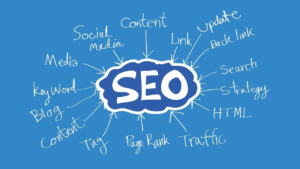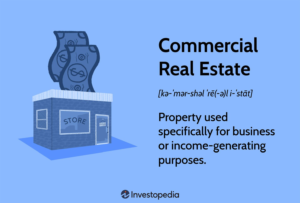Garage Door Repair Buckeye AZ can be costly, but regular maintenance and addressing issues early can reduce the likelihood of more extensive repairs. A professional can help with lubrication, inspections, and track alignment to extend the life of your garage door.
Replacing the circuit board for a garage door costs $150 to $400. It can also cost $100 to fix a door that sags in the middle.

There are few things in a house that require long-term maintenance like the garage door. It is vital to have it checked, repaired and inspected on a regular basis so that it continues to function properly and without issues. Many people try to save money by attempting DIY repairs or replacements. This can lead to mistakes that cost more in the long run, especially if critical parts are damaged in the process.
Garage doors are complex systems that must be able to balance various components in order to work. If you don’t understand how a door works, it can be easy to make a mistake that damages the mechanism. Professionals have extensive knowledge of how garage doors are constructed and can ensure that the work is done correctly.
A professional technician will be able to identify and diagnose any problems with your garage door quickly. They can also help you determine whether a repair or replacement is the best option for your needs and budget. They will also be able to install or replace your garage door using high-quality products that will last for years.
Professionals are able to work safely and quickly in a variety of challenging or hazardous conditions. They can handle working with springs and other high-tension components, work in confined spaces or on ladders and work in extreme temperatures. Hiring a professional minimizes the risk of injury and accidents and ensures that your garage door is repaired or replaced properly.
In addition, professional technicians have the experience to troubleshoot any problems and find the right solutions. They can also work with a wide variety of different styles and materials so that you can customize your garage door to meet your specific needs.
Another benefit of hiring a professional is that they are insured and will cover any damage to your property or injuries sustained during the repair or installation process. This is important because if you attempt to work on your garage door yourself and something goes wrong, you could be liable for any medical bills or repairs.
Safety
Professional technicians are trained to identify and fix issues that could pose safety risks. They are able to perform a thorough inspection of the equipment and troubleshoot the source of the problem, which may involve disassembling certain components or interpreting diagnostic manuals. They have the experience, technical knowledge and skill set to work safely with garage doors.
They are able to prevent problems from escalating into larger issues. This allows them to save time and money for the homeowner, while ensuring that the repair is done correctly and efficiently. They are also able to diagnose the cause of the breakdown and provide recommendations on how to avoid the problem in the future.
One of the most common issues that professional garage door repair companies deal with is malfunctioning safety features. These include photo-eye sensors and mechanical auto-reverse, which are designed to detect obstacles in the path of the closing garage door and reverse its movement to prevent accidents. If the sensors are misaligned or dirty, they can fail to function properly and create a hazard for anyone who is nearby when the door is closing.
Garage door repair professionals are able to test these safety features during routine maintenance sessions and ensure that they are functioning correctly. These tests can be as simple as waving a broom under the door while it is closing automatically or placing a wood plank underneath the door and activating the sensor. The garage door should immediately reverse its movement if the sensor is activated, indicating that the sensors are working properly.
When There is Serious Damage
The most serious issue that a garage door can experience is extensive structural damage, which could compromise the integrity of the structure and lead to safety hazards for homeowners or their loved ones. This could include cracks in multiple panels, warping and rusting, and a significant loss of stability. In this case, it would be more cost-effective to replace the garage door than try to repair it, especially if the damage extends to the frame or motor. This type of damage can be caused by severe weather conditions or by wildlife like raccoons and opossums that may seek shelter under the garage door.
Time
The time it takes to repair a garage door system depends on the type of issue and its severity. It also varies based on whether the problem can be resolved quickly or requires more in-depth troubleshooting. Professional technicians have the tools and skills needed to perform efficient repairs, minimizing downtime and allowing you to reclaim your garage space sooner.
Rapid Diagnosis
Professional garage door technicians are trained to quickly identify and address issues ranging from sensor malfunctions to broken springs. They understand the ins and outs of each component, enabling them to pinpoint the source of problems with precision. This efficiency minimizes downtime, allowing you to reclaim your garage and your life sooner.
Detailed Repairs
If the garage door has sustained extensive damage from a storm or a car accident, it may take more than a few hours to repair. Replacing a damaged panel, for example, can take up to 4 hours from start to finish. This includes removing and installing the new panel as well as re-balancing the entire system to ensure it is safe and operating properly.
Similarly, replacing the garage door opener or motor can be a lengthy process. It can easily take a full day or more to install the new hardware, including rewiring and setting up the new opener system.
Even if you’re not experiencing any immediate issues, it is important to schedule regular garage door maintenance appointments. This is the only way to keep your system in top condition and to avoid expensive repairs down the line. It’s easy to overlook minor annoyances, such as a squeaky roller or loose screw, but ignoring them can lead to major problems in the future.
For example, a frayed cable can cause the garage door to hang unevenly or become completely inoperable, while a worn weatherstripping or faded decorative hardware can leave the garage doors looking unsightly. It’s best to replace these components when they begin to show signs of wear and tear, rather than waiting for them to break down altogether. In many cases, replacing older doors with newer models can be more cost-effective than repairing an old and aging one.
Money
When you hire a garage door repair company, you’re paying for expert knowledge and quality workmanship. However, some companies are more reliable than others, which may make all the difference in a successful repair job and avoiding additional costs down the road.
When deciding which garage door repair company to work with, do your homework. Research online, ask friends and neighbors for recommendations, and compare prices. Be sure to get all quotes in writing and pay attention to any details that are not clear or may indicate hidden charges. It’s also important to look at the company’s reputation. Do they offer a guarantee or warranty for their services? If so, what is the process for requesting a replacement or refund in the event of defective work?
The average cost for garage door repairs varies by type and complexity. For example, a simple adjustment like sensor alignment will likely be less expensive than replacing a broken panel. In addition, the material of the garage door affects repair costs. Wood doors are typically more costly to repair than steel or fiberglass options.
Another factor to consider is whether the garage door repair service is licensed. If they are not, you may be exposed to unscrupulous practices, including false advertising and under-delivered services. Finally, the length of time the company has been in business is a good indicator of their reliability.
The most common way to find a reputable garage door repair service is to ask friends and family for recommendations. This method is often the best because it’s unbiased and provides information from people who have first-hand experience working with the company. Additionally, a trustworthy repair company will be proud to share positive or negative feedback from previous clients with you. Lastly, check out the company’s website and social media profiles to see what other people are saying about them. You should also look for a physical address and verify this on Google Maps or Street View. This will help you avoid hiring a company that hides their address to protect their identity and prevents you from finding them.







